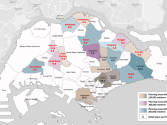
RMB gaining ground as global trade currency
Yuan continues to gain favor after inclusion in the IMF’s SDR Basket and Implementation CBIS.
The end of 2015 was pivotal for the RMB, as it was included in the International Monetary Fund’s (IMF) Special Drawing Rights currency basket, solidifying its status as a global reserve currency. Following numerous steps to liberalise its capital account and improve openness, the country’s currency finally met the IMF’s criteria for ability to be used freely.
The RMB is assigned a weight of 10.92%, making it the most heavily-weighted component of the basket behind the US dollar and the Euro. The recent move to include the Yuan in the currency basket emphasises the continuously increasing significance that Asia has to global trade, with its largest economy’s currency being deemed a universal store of value. According to SuanTeck Kin, an analyst at UOB, “the RMB’s status is now elevated to that of ‘reserve currency’. This means that central banks and other asset managers would need to adjust their portfolio allocation to accommodate RMB-denominated assets.
As the number of companies in Asia increases, there is also an increasing number of firms that do not do business with Western counterparties. The increasing economic activity in Asia means that an ever larger part of trade is being kept within the region, and it makes no sense for these firms to be transacting in western currencies.
With the renminbi’s continued push towards becoming a global currency, it is increasingly becoming a preferred medium of exchange for companies in Asia. Financial services providers are beginning to take notice, increasing the scope and variety of RMB-denominated products and services, particularly in the trade finance business segment. The growing relevance of the yuan is only a small part of the larger trend of Asia becoming a much more significant contributor to global trade.
Unmet demand in Asia
Despite China’s status as the world’s largest exporter, the RMB accounted for less than 2% of global payments in 2014, according to Ernst & Young Banking & Capital Markets GEM leader, Jan Bellens. Previously, there was a persistent gap between the contribution of China to trade and the facilities provided by stakeholders to transact in a more relevant currency.
“This is currently changing in favor of China with the launch of its first phase of the Cross-border Interbank Payment System (CIPS) in October”, according to Bellens. He says that this facility allows institutions to “enjoy clearing services and capital settlement for cross-border yuan transactions without using an offshore clearing centre.”
This will remove much of the friction cost or delays that may have hindered transactions from being denominated in yuan, along with the additional costs or risks involved with Asian parties transacting in foreign currencies. Further, the implementation of this payment system will further improve the quality of yuan-denominated clearing and settlement standards, and “aligning these with international practice and processes and allowing for higher compatibility,” according to Bellens.
He expects impact from this new system to begin manifesting in the medium term as CIPS lowers the cost of clearing RMB-denominated transactions for more international banks and help increase volumes globally as more trade participants are able to link with the PBOC’s system. These changes will take some time, and Bellens notes that they “do not anticipate massive moves on the Asian banks’ China strategy also because the initial cost of the technology needed to join CIPS as a direct member would keep many on the sidelines.”
Developing strategies
As the currency gains traction as a preferred exchange medium, financial services providers will also have to respond to this growing client need. “Asian banks need to develop concrete international strategies to quickly respond to the CIPS and the high increase in RMB usage” according to Noppawan Jermhansa, executive vice president at Kasikornbank.
Beyond China, the ASEAN community is also quickly gaining importance in the global economy with the region growing at a 5.04% CAGR over the last five years, making it one of the fastest growing regions in the world. Despite this, Asian SME’s continue have difficulty obtaining access to trade financing, according to Westpac’s























 Advertise
Advertise










